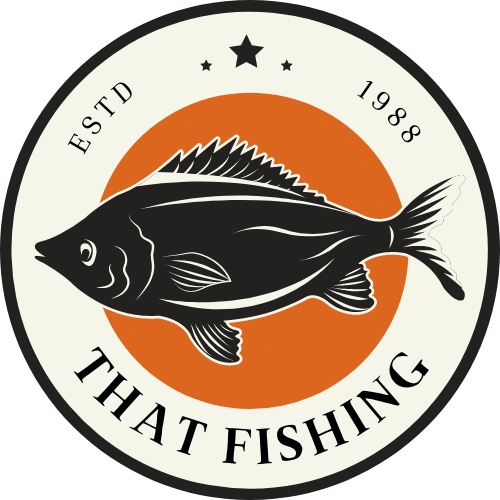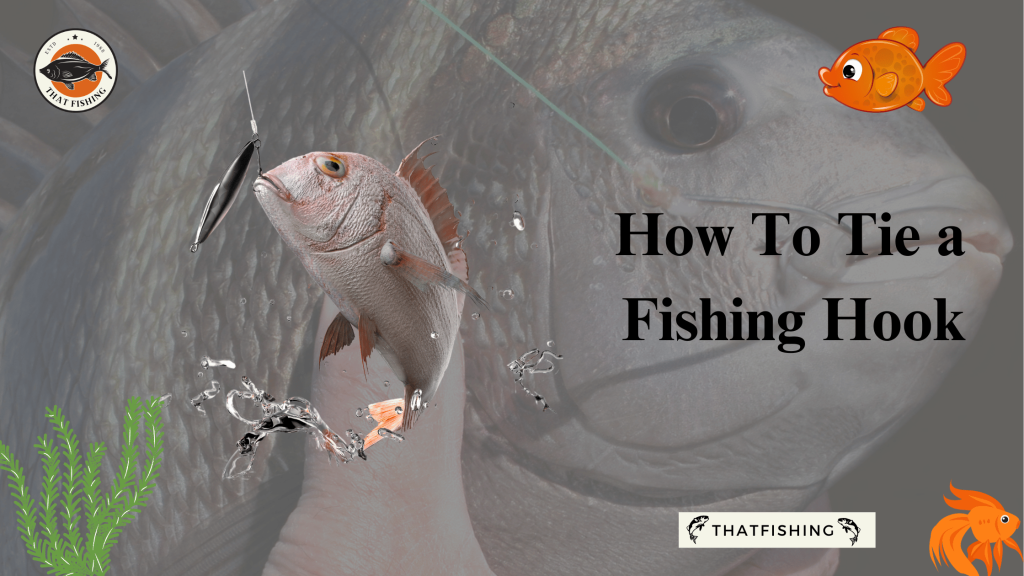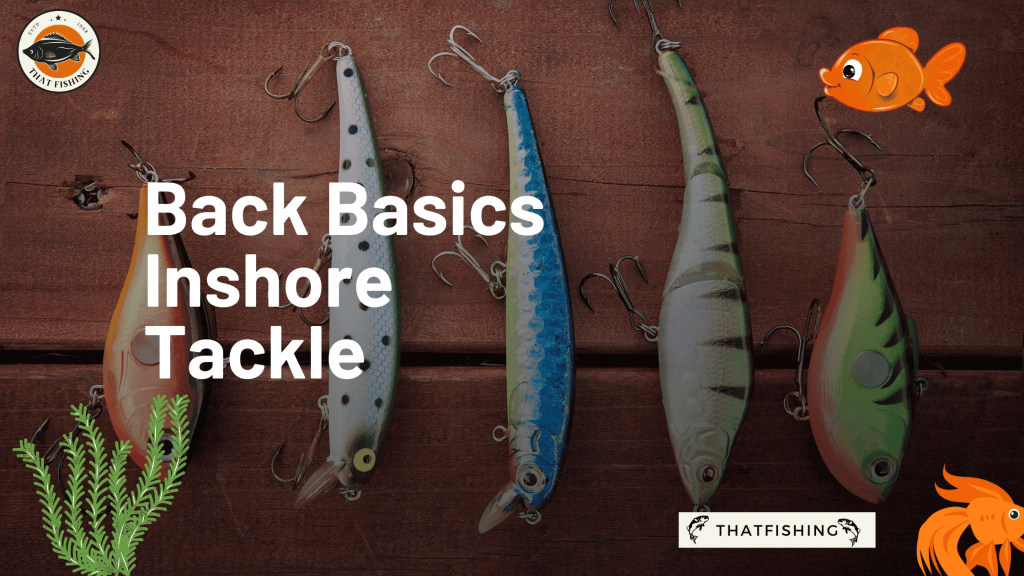Are you an avid angler? Or is this your first time on the journey of catching fish? This guide will undoubtedly provide the best ways to improve your fishing experience. For every fisherman, the primary step is setting the hook properly. If the knot goes wrong, your expectation of getting the most significant fish will remain unfulfilled. Therefore, be prepared with all the necessary fishing gear, such as the hook, fishing line, bait, fishing rod, and wheels.
Tying the hook is crucial for fishing. Your adventures on the lakeside or rocky cliffs will become more enthusiastic as you get the perfect hook. Taking the fishing rod and wheels will not be enough. So, learn the styles for tying knots on hooks to attract the fish of the sparkling waters.
How to tie your fishing hook?
A fishing hook is the primary ingredient for successful fishing. A perfect hook and knot are essential to catch a big fish. Here we will guide you on how to tie the fishing hook appropriately for a lovely catch. Only a few steps will be enough to make you a pro in this activity.
You will find multiple types of fishing hooks available in the market. Although each hook has something unique, a few traits are common in all of them. You must be well-acquainted with the hook’s pattern to understand the tying style.
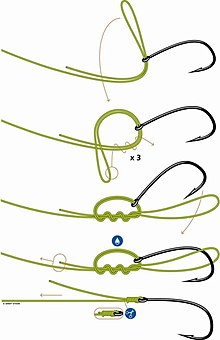
Things to remember while tying the hook are;-
- Point: This is the sharp end of the hook to get it icing to the fish’s mouth
- Eye: This is the hole through which you will slide the line in
- Barb: This supports the setting of the hook and is actually the point’s extension
- Shank: This is the connecting point for the hook’s eye and bend
- Gap: This is the separating point for point and shank
You must be cautious about the eye and tie the knot around it. Furthermore, always ensure that the knot stays firm during the whole process. Check before you throw the line into the water.
Knowing the different types of knots
Different types of knots exist to make your fishing go smooth and hurdle-free. The proper setup of the hook will lead to perfection. We mention some of the famous knots in this segment.
1. Clinch Fishing Knot
A clinch knot is the most common way of tying fishing knots. It is very easy to tie and ensures holding the weight correctly. Thus, even a novice will be comfortable in making the clinch knots for frequent fishing purposes.
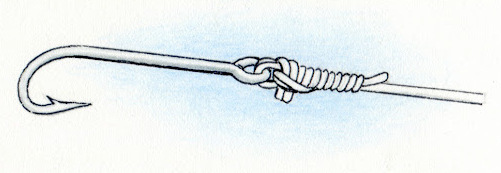
The steps include:-
1. Tie the knot
2. Insert the fishing line’s end through the hook eye
3. Wrap the line by repeating the process 4 to 6 times with the help of a reel
4. Use the loop created to pass the line’s end
5. Pull the line for tightening and clip the excess parts of the knot lying
2. Palomar Knot
A braided fishing line will work wonders if you tie the strongest knot of Palomar. Here is the procedure of doing the same.
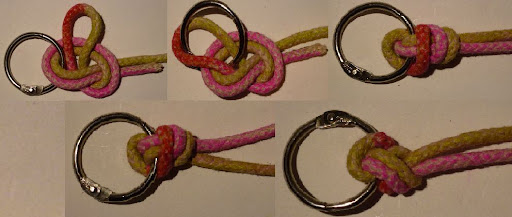
1. Take 6 inches of the fishing line to tie the knot.
2. Double the line before passing it through the hook’s eye
3. Let the hook hang after you tie the overhand knot
4. Now, make both ends tight and strong by pulling from both sides
5. Check the tag end and remove the excess parts
3. Baja Knot
A firm knot to tackle a heavier line will go well with Baja style. You can make loop-to-loop connections to catch the target easily.

Check out the steps here;-
1. From the end, make two simple loops
2. Hang the hook free from the loop’s base
3. Keep making the remaining loops in this position
4. Slide the line’s end to the front part and pull to get a smaller loop
5. Adjust the second loop properly and repeat the sequence to get other loops
6. Pass the hook into the topmost knot. Now, slide to the second one again to the top.
7. Make the knot firm to avoid slipping.
8. Get pliers to protect your hook from getting loose.
9. Now, pull properly for a robust line.
You can try many other forms also to reach your goal. Remember always that your success depends on your knot. So, be very careful while following this first step.
Things to consider while selecting your knot
Fishing knots are the most crucial parts for taking a big dig. Moreover, you must consider several conditions while selecting the knot per circumstance. Of course, a beginner will start with the simplest knot style possible, like the clinch knot. However, this process may not be suitable in several other conditions, especially for a gigantic fish. Hence, your knot must suit the conditions, ensuring you get the fish you want. Considering the conditions is also vital to determine how to tie a fishing hook.
The essential things in this aspect are:
Type of water: You have to determine whether the waterbody for fishing is salty or sweet. Accordingly, you can choose your bait and knot. For example, knots for deep-sea fishing will not be the same as the local coastal water bodies.
- Weather: The climatic conditions are also crucial for deciding on the right knot
- Fish type: The complex knot types are more effective in getting a heavy and big catch
- Skill type: Your experience and skills are also significant in selecting the knot.
You can never identify any one knot to be the strongest. The knot’s strength will depend on your skills and the quality of the hook.
What are the Different baits used?
Coming to the next critical part, we will talk about the baits. When you are through with how to tie a fishing hook, shift all your focus toward the baits and fishing lures. These lures vary in nature and size. Therefore, you have to be specific about the baits to be used as per the availability of fish. A few common baits are as follows;-
- Jigs: This lure comes with a heavy head. Therefore, it is effortless to sink and presents a good bait for marine creatures. Palomar knot is the best choice for this.
- Plug Lure: You can gradually keep the plug suspended in the water to attract the fish. Play with your wheels and twitch as the plug floats. A uni knot is preferable for it.
- Spinner bait: Skirted hook and metal blades are the specialities here. As you suspend it in the water, the propeller will activate. The vibration can bring different fishes near the shores. Modified Trilene knot is the best here. However, you can use it for a clinch knot too.
Tips to keep your fishing hook last longer
You have to learn to sustain the fishing hook for a long time. The duration of fishing is usually a long one. So, we present some tips here.
1. Use proper rigs as per your hookset. Balance is essential to let the hook pass into the fish’s mouth.
2. Always make the required investment for buying high-quality strong hooks.
3. Set the hooks correctly to tie the knot with the balanced outfit
4. Never set out without researching the fishing plan
5. Suspend the hook tip correctly and bend your rod. The lines must be straight
Ways to tackle fishing knot problems
The anglers must concentrate more on the hookset and the quality to avoid fishing knot problems. The common cases can be;-
- A knot may not be suitable according to the fishing line used
- The mono or fluoro can be weak, leading to knot failure
- The simple and loose knot can make the bait slip
Therefore, your knots must be proper, firm, and up to the mark. Keep the hook intact and move the wheels at the right time.
Conclusion: Tie A Fishing Hook
The above discussion has already given you an idea about how to tie a fishing hook. So, we suppose the next fishing adventure will be more enjoyable as you follow the tips. For better results, you can also refer to some fishing videos before you finally apply the knots and the baits.
Related read;
- How To Tie A Dropper Loop
- Fishing: A Competitive Sport or Just a Hobby
- How fishing boat proceeds affect your taxes
FAQs: Tie A Fishing Hook
This is perfect for monofilament. Moreover, it is a versatile knot aiding in reel and line attachment also. To make it, you need to
– Let the line pass the hook’s eye and form a simple loop
– Wrap the line’s end around the loop
– Repeat it multiple times and lubricate the spirals
– Pull the ends, giving less pressure on the standing line
Yes. It is the best choice for fishing. However, remain quiet and restrain yourself from disturbing the water. A sudden movement can scare the fish away.
– Prefer to take a companion for fishing
– While fishing on a boat, never forget to wear the life jacket
– Avoid crowd while making a cast
– Go for recycling after you are done with fishing
– Be conscious about the sharp ends of hooks
